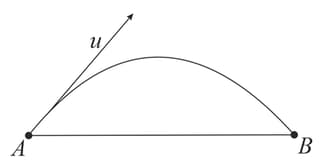B M Sharma Solutions for Chapter: Coulomb's Laws and Electric Field, Exercise 5: DPP
B M Sharma Physics Solutions for Exercise - B M Sharma Solutions for Chapter: Coulomb's Laws and Electric Field, Exercise 5: DPP
Attempt the practice questions on Chapter 1: Coulomb's Laws and Electric Field, Exercise 5: DPP with hints and solutions to strengthen your understanding. Chapterwise/Topicwise Daily Practice Problems (DPP) Electrostatics and Current Electricity JEE Main & Advanced solutions are prepared by Experienced Embibe Experts.
Questions from B M Sharma Solutions for Chapter: Coulomb's Laws and Electric Field, Exercise 5: DPP with Hints & Solutions
Two identical point charges are placed at a separation of . is a point on the line joining the charges, at a distance from any one of the two charges. The field at is . is plotted against for values of from close to zero to slightly less than . Which of the following represents the resulting curve?
The bob of a pendulum of mass carries an electric charge of in an electric field of and it is at rest. The angle made by the pendulum with the vertical will be
Two charges each equal to are placed at the corners of an equilateral triangle of side. The electric field at the third corner is where
Two point charges and are fixed on the -axis at positions and from the origin, respectively. At what positions on the axis, the resultant electric field is zero?
A hemisphere is uniformly charged positively. The electric field at a point on a diameter away from the centre is directed
An electron falls through a small distance in a uniform electric field of magnitude . The direction of the field is reversed keeping the magnitude unchanged and a proton falls through the same distance. The time of fall will be
There is a uniform electric field of strength along -axis. A body of mass and charge is projected into the field from origin along the positive -axis with a velocity . Its speed in after is (neglect gravitation)
In the figure shown, there is a large sheet of charge of uniform surface charge density . A charge particle of charge and mass is projected from a point on the sheet with a speed with angle of projection such that it lands at maximum distance from on the sheet. Neglecting gravity, find the time of flight.

